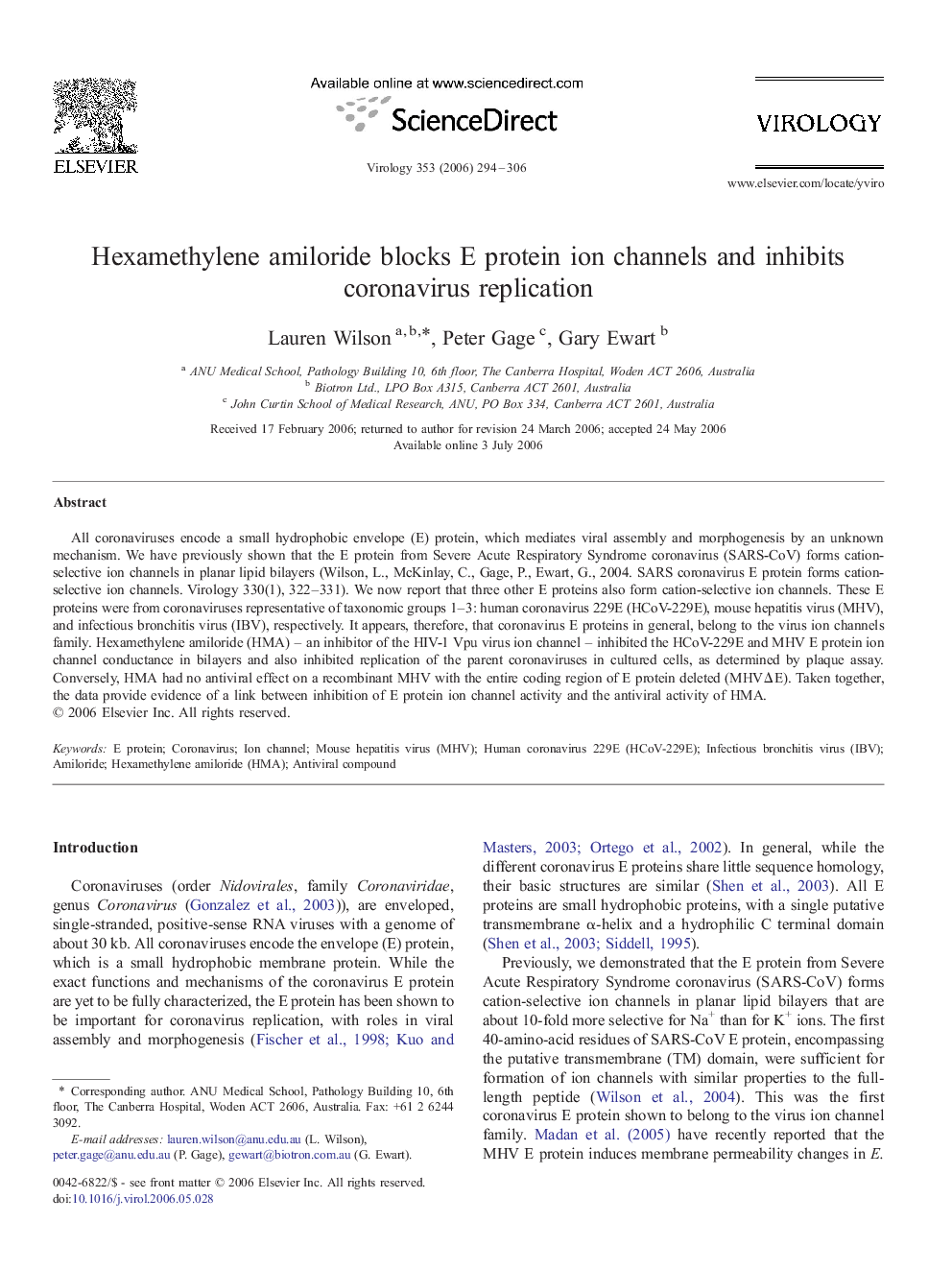| کد مقاله | کد نشریه | سال انتشار | مقاله انگلیسی | نسخه تمام متن |
|---|---|---|---|---|
| 3427528 | 1227412 | 2006 | 13 صفحه PDF | دانلود رایگان |

All coronaviruses encode a small hydrophobic envelope (E) protein, which mediates viral assembly and morphogenesis by an unknown mechanism. We have previously shown that the E protein from Severe Acute Respiratory Syndrome coronavirus (SARS-CoV) forms cation-selective ion channels in planar lipid bilayers (Wilson, L., McKinlay, C., Gage, P., Ewart, G., 2004. SARS coronavirus E protein forms cation-selective ion channels. Virology 330(1), 322–331). We now report that three other E proteins also form cation-selective ion channels. These E proteins were from coronaviruses representative of taxonomic groups 1–3: human coronavirus 229E (HCoV-229E), mouse hepatitis virus (MHV), and infectious bronchitis virus (IBV), respectively. It appears, therefore, that coronavirus E proteins in general, belong to the virus ion channels family. Hexamethylene amiloride (HMA) – an inhibitor of the HIV-1 Vpu virus ion channel – inhibited the HCoV-229E and MHV E protein ion channel conductance in bilayers and also inhibited replication of the parent coronaviruses in cultured cells, as determined by plaque assay. Conversely, HMA had no antiviral effect on a recombinant MHV with the entire coding region of E protein deleted (MHVΔE). Taken together, the data provide evidence of a link between inhibition of E protein ion channel activity and the antiviral activity of HMA.
Journal: Virology - Volume 353, Issue 2, 30 September 2006, Pages 294–306